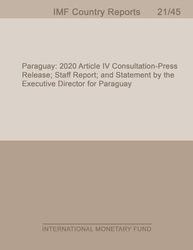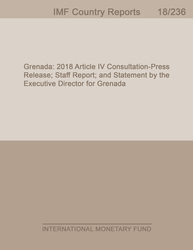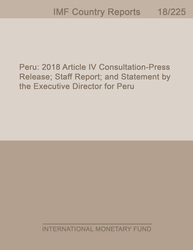
Paraguay:2020 Article IV Consultation-Press Release; Staff Report; and Statement by the Executive Director for Paraguay
2020 Article IV Consultation-Press Release; Staff Report; and Statement by the Executive Director for Paraguay
READ MORE...
Volume/Issue:
Volume 2021
Issue 045
Publication date: March 2021
ISBN: 9781513570785
$5.00
Add to Cart by clicking price of the language and format you'd like to purchase
Available Languages and Formats
| English | |||
| Spanish |
Prices in red indicate formats that are not yet available but are forthcoming.
Topics covered in this book
This title contains information about the following subjects.
Click on a subject if you would like to see other titles with the same subjects.
Banks and Banking , Public Finance , Taxation - General , ISCR , CR , investment spending , supply and demand demand shock , emergency spending , compilation method , liquidity provision , financial system regulation , COVID-19 , PFM legal and regulatory frameworks , Risk-based supervision , Global , Western Hemisphere
Also of interest
Summary
In the past two decades, Paraguay has seen strong growth and a sharp reduction in poverty. Strong GDP growth was the result of sound macro policies (with low inflation and low fiscal deficits and debt) and an agricultural commodity price boom which spilled over to the non-tradable sector. Growth was not just high but also volatile, as bad weather shocks led to poor harvests, which spill over to the broader economy. In early 2020, Paraguay was rebounding strongly from another weather shock, and full-year growth was forecast at over 4 percent. In 2019, bad weather had reduced the harvest, and GDP growth had come to a near standstill. A recovery started in the second half of 2019 and gathered strength in early 2020—in February economic activity was 7 percent higher than a year earlier. The Covid-19 epidemic halted the recovery. An early lockdown—which kept the death toll among the lowest in the region—led to a sharp contraction in economic activity, with April activity levels at 20 percent below those in February. Women, informal sector workers, and workers in the service sector were particularly hard hit; while children were severely affected by the closing of the schools until the end of 2020.
Copyright © 2010 - 2025
Powered by:
AIDC



